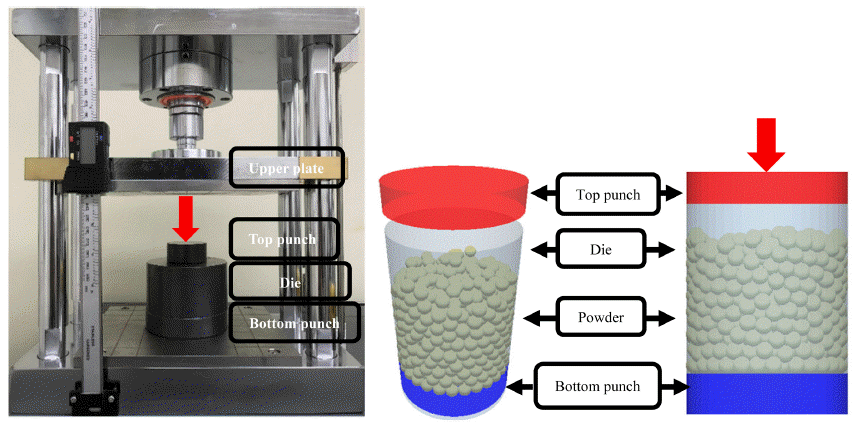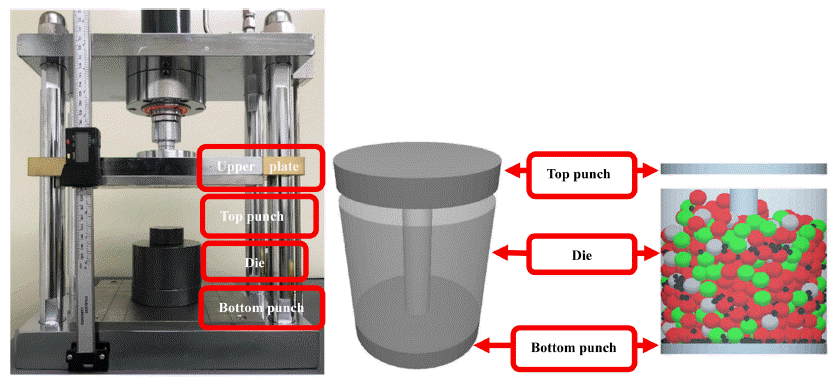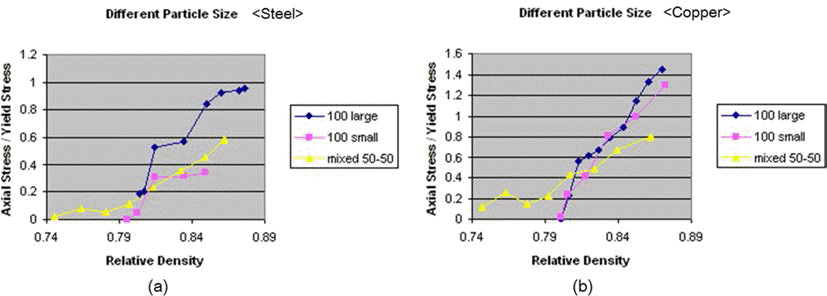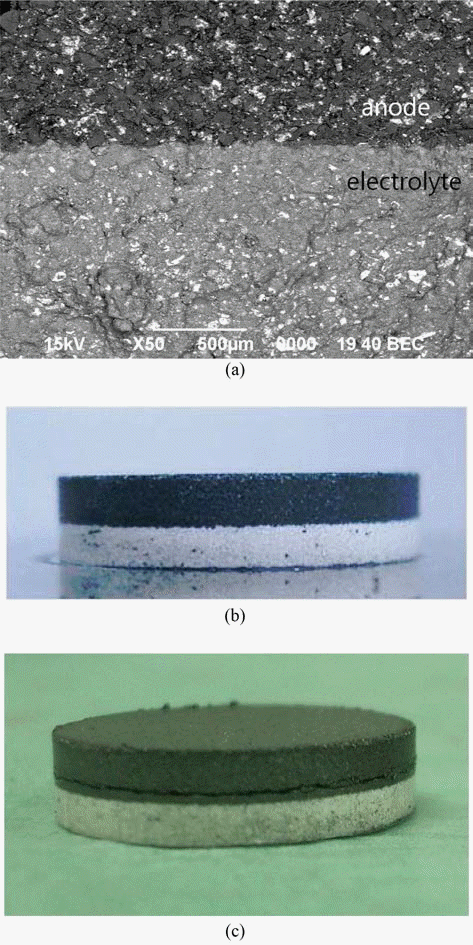Search
- Page Path
- HOME > Search
- [Korean]
- A Study on Graphite Powder Compaction Behaviors Using the Discrete Element Method
- Jun Hyeok Jeong, Jinnil Choi
- J Korean Powder Metall Inst. 2021;28(1):1-6. Published online February 1, 2021
- DOI: https://doi.org/10.4150/KPMI.2021.28.1.1

- 792 View
- 12 Download
- 1 Citations
-
 Abstract
Abstract
 PDF
PDF Accurate and effective powder compaction analyses are performed for brittle materials such as graphite, utilized as a solid lubricant, by using the discrete element method (DEM). The reliability of the DEM analysis is confirmed by comparing the results of graphite powder compaction analyses using the DEM particle bonding contact model and particle non-bonding contact model with those from the powder compaction experiment under the same conditions. To improve the characteristics, the parameters influencing the compaction properties of the metal-graphite mixtures are explored. The compressibility increases as the size distribution of the graphite powder increases, where the shape of the graphite particles is uniform. The improved compaction characteristics of the metal-graphite (bonding model) mixtures are further verified by the stress transmission and compressive force distribution between the top and bottom punches. It is confirmed that the application of graphite (bonding model) powders resulted in improved stress transmission and compressive force distribution of 24% and 85%, respectively.
-
Citations
Citations to this article as recorded by- Effects of solid graphite lubricants for powder compaction
Jun Hyeok Jeong, Jinnil Choi
Powder Metallurgy.2021; 64(3): 241. CrossRef
- Effects of solid graphite lubricants for powder compaction
- [Korean]
- Study on the Compaction Properties of Fe-Si-Al-Graphite Powder Mixtures
- Jun Hyeok Jeong, Jinnil Choi
- J Korean Powder Metall Inst. 2020;27(4):300-304. Published online August 1, 2020
- DOI: https://doi.org/10.4150/KPMI.2020.27.4.300

- 426 View
- 3 Download
-
 Abstract
Abstract
 PDF
PDF In this paper, a durability study is presented to enhance the mechanical properties of an Fe-Si-Al powderbased magnetic core, through the addition of graphite. The compressive properties of Fe-Si-Al-graphite powder mixtures are explored using discrete element method (DEM), and a powder compaction experiment is performed under identical conditions to verify the reliability of the DEM analysis. Important parameters for powder compaction of Fe-Si-Algraphite powder mixtures are identified. The compressibility of the powders is observed to increase as the amount of graphite mixture increases and as the size of the graphite powders decreases. In addition, the compaction properties of the Fe-Si-Al-graphite powder mixtures are further explored by analyzing the transmissibility of stress between the top and bottom punches as well as the distribution of the compressive force. The application of graphite powders is confirmed to result in improved stress transmission and compressive force distribution, by 24% and 51%, respectively.
- [English]
- Parameter Investigation for Powder Compaction using Discrete-Finite Element Analysis
- Jinnil Choi
- J Korean Powder Metall Inst. 2015;22(5):337-343. Published online October 1, 2015
- DOI: https://doi.org/10.4150/KPMI.2015.22.5.337

- 771 View
- 6 Download
-
 Abstract
Abstract
 PDF
PDF Powder compaction is a continually and rapidly evolving technology where it is a highly developed method of manufacturing reliable components. To understand existing mechanisms for compaction, parameter investigation is required. Experimental investigations on powder compaction process, followed by numerical modeling of compaction are presented in this paper. The experimental work explores compression characteristics of soft and hard ductile powder materials. In order to account for deformation, fracture and movement of the particles, a discrete-finite element analysis model is defined to reflect the experimental data and to enable investigations on mechanisms present at the particle level. Effects of important simulation factors and process parameters, such as particle count, time step, particle discretization, and particle size on the powder compaction procedure have been explored.
- [Korean]
- Effects of Particle Size and Binder Phase Addition on Formability of Li-Si Alloy Powder for Thermal Battery Anode
- Sung-Soo Ryu, Hui-Sik Kim, Seongwon Kim, Hyung-Tae Kim, Hae-Won Cheong, Sung-Min Lee
- J Korean Powder Metall Inst. 2014;21(5):331-337. Published online October 1, 2014
- DOI: https://doi.org/10.4150/KPMI.2014.21.5.331

- 585 View
- 8 Download
-
 Abstract
Abstract
 PDF
PDF The effects of particle size of Li-Si alloy and LiCl-KCl addition as a binder phase for raw material of anode were investigated on the formability of the thermal battery anode. The formability was evaluated with respect to filling density, tap density, compaction density, spring-back and compressive strength. With increasing particle size of Li-Si alloy powder, densities increased while spring-back and compressive strength decreased. Since the small spring-back is beneficial to avoiding breakage of pressed compacts, larger particles might be more suitable for anode forming. The increasing amount of LiCl-KCl binder phase contributed to reducing spring-back, improving the formability of anode powder too. The control of particle size also seems to be helpful to get double pressed pellets, which consisted of two layer of anode and electrolyte.
TOP
 KPMI
KPMI


 First
First Prev
Prev


